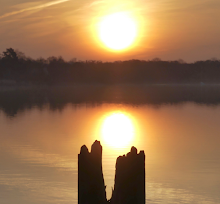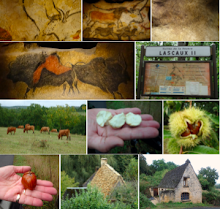Despite the forecast the day was sunny and but still cool as we visited the ancient Roman amphitheatre Arène du Lutetia. Even the remains of this 2100 year-old entertainment centre are impressive and let you imagine the staged life-and-death "shows" with gladiators or with people versus lions while 15.000 spectators cheered.
The Église Saint-Étienne-du-Mont (at left) is one of the most beautiful among Paris' 200 churches. The cornerstone of Saint Stephen's church was laid in 1492 and construction went on for 130 years. Well, the end product is first class both on the ex- and interior.
The choir screen, exquisitely carved in stone, is the sole surviving example in Paris.
Neighbouring St. Stephen is the mighty Panthéon built 1755-1790 by the order of King Louis XV. His ambition was to outdo the churches of St. Peter's in Rome and St. Paul’s in London. The monumental columnar entrance was inspired by Hadrian's ancient Pantheon in Rome.
In this grandiose building the official France celebrates the history of the nation and commemorates the nation's greatest men and women, – and a number of them are buried here in the crypt.
 |
| The tomb of Maria Skłodowska-Curie and her husband Pierre Curie in the Panthéon crypt. |
Suspended in a 67-m-long wire from the very top of Panthéon's dome slowly swings a 28-kg brass/lead bob: Foucault's pendulum.
This is a simple device named after the French physicist Léon Foucault and in 1851 he conceived this experiment to demonstrate the Earth's rotation and the 24-hour clock as well. Read about the mechanics.
This photo was snapped at 11:50, and Foucault was right on the spot!
On our way to Jardins du Luxembourg for lunch we encountered these wild and electric onewheelers. They are fast and seem dangerous when meandering the dense Parisian traffic.
 |
| We had our lunch in the park next to Palais du Luxembourg, the home of France's Senate. |
A small museum dedicated to Marie and Pierre Curie was the last item on today's agenda for us.
Madame Curie in her office next to the museum.
In the first decades after Curie's discovery of radioactivity a lot of innovative uses of radium were marketed – and sold. Here's an add for wool yarn treated with radium. Highly recommended for sweaters to babies because the radioactivity would produce a "healthy and soft heat" and keep baby's body warm and cosy !!!
On our way home we relaxed with these youngsters at Place de Mouffetard.
After sunset (i.e. after 21) I headed out of flat and around the corner to check out the wildlife in front of the Opera.
All in all, a very nice Saturday evening in Paris, the City of Lights. 💥








































